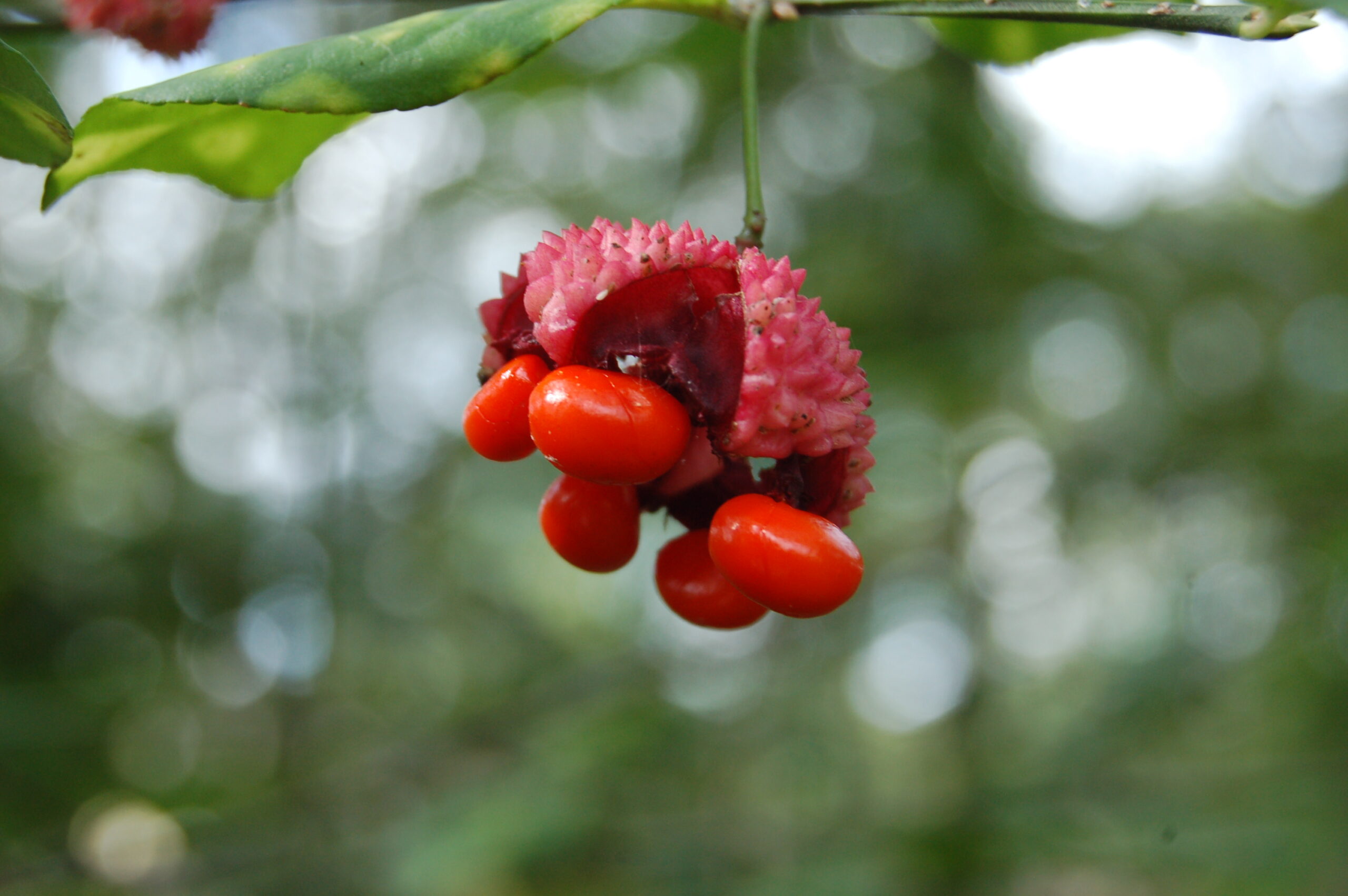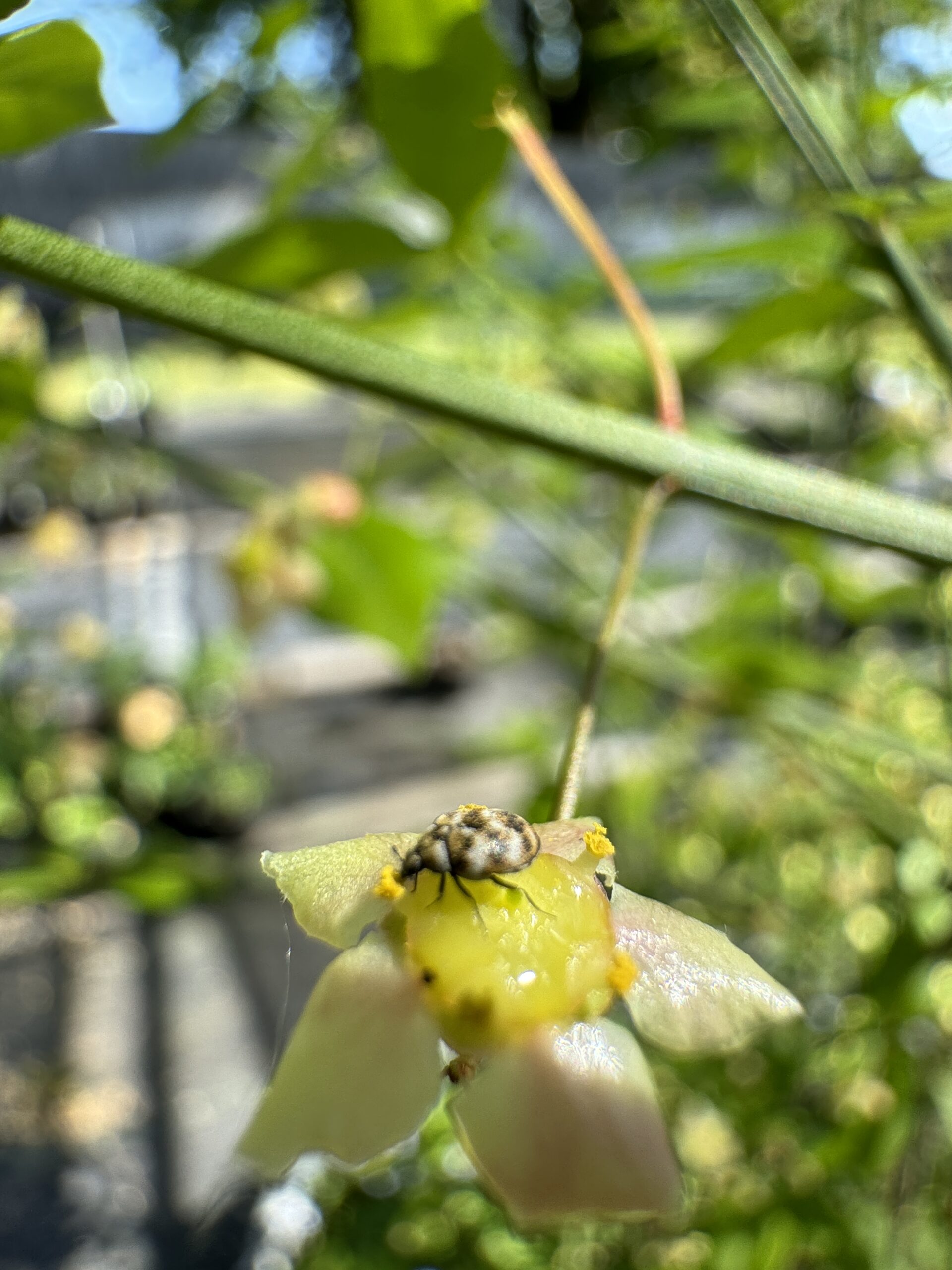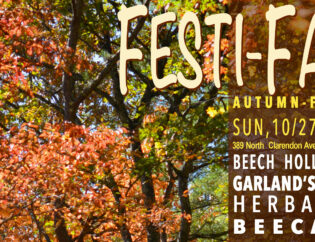

Bees and Butterflies are not the only pollinators
that plants have beguiled into working with them. The hummingbird is another animal that delights us humans with pollinating activities and antics. Not noticed as often, ants and beetles are also called into action by certain plants to carry out pollination chores. For the past several years I had noticed that the small and odd flowers of Heart’s a Busting, Euonymous americanus, were being visited by ants. Not bees, ants.
The center of the funny looking flower of Euonymous americanus has a glossy yellow disc that surrounds the central sprig of a pistil. Five tiny nubs of pollen bearing anthers are equidistant from each other around the outer ring of the flower.
This year several of us got pictures of ants in action on these flowers. We also saw a tiny beetle at work, Anthrenus verbasci, also known as the Carpet Beetle, burying its head in the flower’s dusty yellow anthers.
In the picture above, two small black ants are seen nibbling on the glossy yellow disc that surrounds the pistil of the flower. Every time we saw an ant, it was engaged in this yellow glossy disc.
The picture to the right shows a Carpet Beetle, Anthreni verbasci, browsing on pollen. The beetles didn't seem to have any interest in the glossy yellow discs that the ants were grazing on in the other picture.
The ants didn’t pay any attention to the anthers, but probably brushed against the anthers as they foraged. The beetles seemed to pay no attention to the glossy central disc of the flowers, but kept burying their little heads in the anthers, getting covered in pollen.

Nectars that attract ants are different from the nectars that target bees or hummingbirds. Ant-attracting nectars aren’t sugar based, instead they provide the ants with fats, linoleic and oleic acids, and amino acids. Ants cannot produce linoleic acid, but their larvae require this nutrient for development. How the heck do plants “know” what to provide, and then create a delivery system that furthers the plant's need for pollination in order to reproduce? It is amazing.
The beetle is more interested in the pollen, which provides a high protein meal for many different species of insect pollinators. Carpet beetles can also be found browsing pollen several different species of flowering plants.

Back to the Heart's a Busting, there's not a bee in sight. If someone sees one, let me know.
Every fall, when we see the spectacular and weird fruit of the Heart’s a Busting, its because of the tiny weird flowers with their shiny discs which may be composed of fat, their pollen bearing anthers, and their pollinators: ants, and Carpet Beetles...and who knows what other tiny pollinating critter may come to visit? I am going to keep my eyes open.









